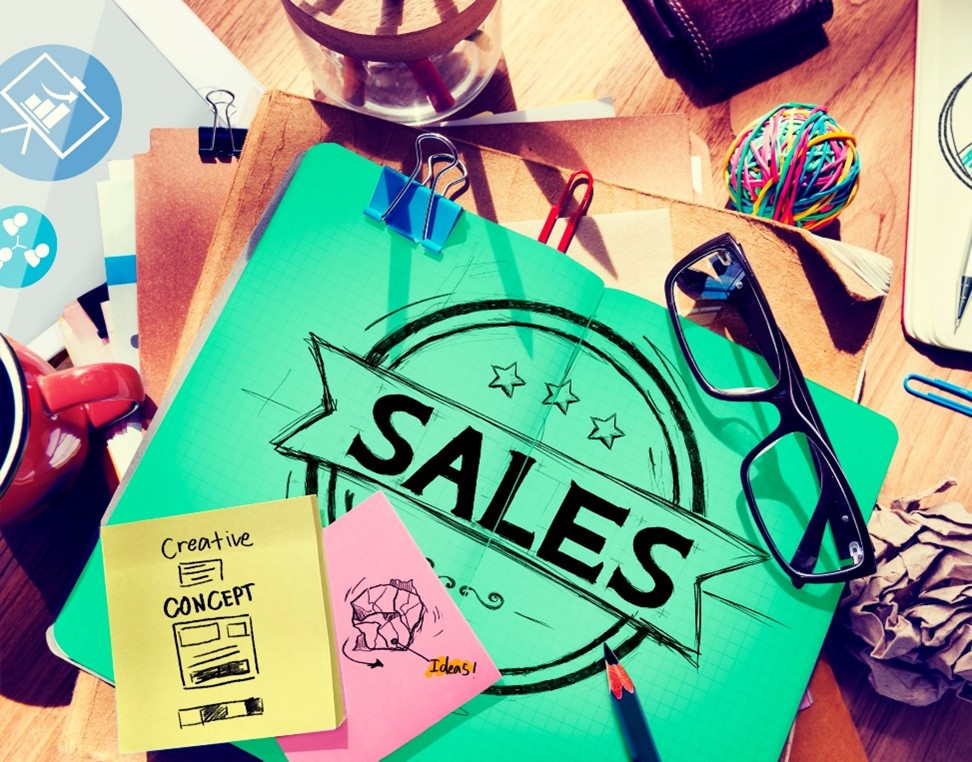Ian Aubourg of East Greenwich is a seasoned sales professional who understands that the within the fast-paced realm of sales, adaptability is key. In the following article, Ian Aubourg discusses the intricacies of continuous learning and development, which illuminates the path to success in the sales landscape.
In the fiercely competitive world of sales, continuous learning has become a game-changer. By embracing ongoing training and development, sales teams can stay ahead of the curve, adapt to the ever-changing market, and ultimately boost their success. Are you ready to discover the power of continuous learning and development in sales?
Ian Aubourg Notes Key Takeaways
- Continuous learning in sales is essential for teams to stay competitive and achieve success.
- Sales leaders play an important role in fostering a culture of continuous learning by setting measurable goals, providing training and coaching, promoting collaboration & knowledge sharing.
- Empowering sales teams with continuous learning enables them to develop essential skills, nurture talent & strengthen collaboration for long-term success.
The Continuous Learning Revolution in Sales
 The continuous learning revolution in sales highlights the critical need for sales teams to engage in ongoing training and development to stay competitive and adapt to changing market conditions. With organizations providing regular training on:
The continuous learning revolution in sales highlights the critical need for sales teams to engage in ongoing training and development to stay competitive and adapt to changing market conditions. With organizations providing regular training on:
- Product updates
- Customer concerns
- Onternal processes
- Selling strategies
Studies show that companies with continuous sales training have up to 50% higher net sales per employee than those without.
Ian Aubourg of East Greenwich explains that integrating continuous learning into a sales rep’s daily routine significantly enhances knowledge retention and skill development, boosting sales call results and overall sales performance. Sales training has evolved from generic, one-time events to personalized, ongoing, and relevant learning experiences. Sales leaders have a significant role in nurturing a culture of continuous learning and ensuring their teams can access needed resources and support.
Prioritizing continuous learning enables sales organizations to boost revenue, enhance skills, and secure long-term success.
The Evolution of Sales Training
Traditional sales training, often consisting of one-time events, has proven to be ineffective and forgettable. In contrast, continuous learning techniques are designed to be incorporated into a sales rep’s daily activities, ensuring knowledge retention and skill development. Sales organizations have shifted their focus from mere initial onboarding to a continuous learning model that focuses on ongoing involvement in the sales training process, reinforcing a feeling of autonomy and accountability for the results.
This new paradigm of continuous learning taps into cutting-edge technologies, such as video-based courses, mobile devices, and just-in-time refreshers, making training highly relevant and effectively delivered. Ian Aubourg of East Greenwich says that adopting a continuous learning model focuses on enabling sales organizations to foster lifelong learners who actively pursue new knowledge, remain current with industry trends, and drive sales success.
Ian Aubourg on the Role of Sales Leaders
Sales leaders are pivotal in fostering a culture of continuous learning among their teams. They can do this by:
- Setting measurable goals for learning and development
- Offering ongoing training and coaching
- Promoting collaboration and knowledge sharing
- Arranging learning opportunities
- Forming a positive team culture
- Demonstrating leadership
Through advocating for more resources, providing regular trainings, ensuring access to up-to-date information, and implementing a sales enablement department, sales leaders can ensure their teams have access to necessary learning resources and support.
Ian Aubourg of East Greenwich says that training service teams can lead to better customer experiences and more comprehensive solutions, ultimately contributing to the growth of the sales organization. Sales leaders should also strive to create an environment that fosters seller retention, reducing high turnover rates and promoting a continuous learning culture.
Key Components of a Continuous Learning Program
A successful continuous learning program encompasses three primary stages, including effective training programs:
- Curriculum learning for foundational knowledge
- Reinforcement learning for concept retention
- Just-in-time learning for immediate access to relevant information
Incorporating these key components allows sales organizations to establish a comprehensive and effective continuous learning program that promotes long-term success in sales.
Curriculum Learning
Curriculum learning in sales refers to a structured and comprehensive training program designed to develop and enhance sales professionals’ skills and knowledge throughout their career. This approach ensures individuals progress through a well-designed sequence of topics and skills, building upon their existing knowledge and capabilities, and helps shape the sales team’s culture.
Ian Aubourg of East Greenwich notes that the importance of curriculum learning in a continuous learning program cannot be overstated, as it provides a strong foundation and guarantees a comprehensive understanding of the subject matter. Curriculum learning also facilitates tracking progress and measuring learning outcomes, allowing individuals to evaluate their growth and development over time.
Reinforcement Learning
Reinforcement learning in a continuous sales learning program aims to reinforce the knowledge and skills gained through sales training. Ian Aubourg of East Greenwich explains that this can be achieved through:
- Ongoing coaching
- Practice
- The use of tools like flashcards, quizzes, and bite-sized content to refresh and reinforce sales reps’ knowledge on a regular basis
The ultimate goal of reinforcement learning is to create lasting behavior change and maximize the return on investment in sales training.
Implementing reinforcement learning with a documented schedule of regular reinforcement sessions allows sales organizations to:
- Ensure the retention and effective utilization of newly acquired knowledge in real-world sales situations
- Help sales reps continuously learn and develop their sales craft and market/product knowledge
- Ultimately result in improved sales performance.
Just-in-Time Learning
Just-in-time learning in a sales context is a targeted approach to learning where sales professionals can access the appropriate resources, tools, and guidance when needed to improve their performance and effectiveness in sales. Ian Aubourg of East Greenwich says that this approach allows sales professionals to acquire the necessary knowledge and skills on-demand, thus enabling them to promptly respond to sales situations and challenges.
The advantages of just-in-time learning for sales teams include:
- Increased knowledge retention
- The ability to handle customer queries promptly
- Enhanced relevance and relatability
- Improved performance through expedited access to information and instructions
Utilizing just-in-time learning ensures that sales organizations’ teams are better equipped to close deals and address customer needs.
Empowering Sales Teams with Continuous Learning
 Continuous learning empowers sales teams by developing essential skills, nurturing talent, and enhancing collaboration among team members. Embracing continuous learning allows sales organizations to create a culture of knowledge sharing and growth that promotes long-term success in sales.
Continuous learning empowers sales teams by developing essential skills, nurturing talent, and enhancing collaboration among team members. Embracing continuous learning allows sales organizations to create a culture of knowledge sharing and growth that promotes long-term success in sales.
Developing Sales Skills
Ian Aubourg of East Greenwich reports that developing sales skills is crucial for increased productivity and revenue. Success in sales requires a range of skills, such as:
- Communication
- Active listening
- Persuasion
- Adaptability
- Resilience
- Product knowledge
- Time management
- Relationship building
- Problem-solving
- Confidence
In order to achieve these skills, focusing on sales rep readiness is essential, as it prepares them to handle their sales rep’s daily tasks effectively.
Continuous learning aids sales skill development by:
- Keeping sales professionals updated on market and industry trends
- Enhancing talent retention
- Ensuring consistency in sales techniques
- Optimizing sales performance and results
- Augmenting skills and knowledge with each sales interaction
- Boosting overall employee engagement
- Equipping sales reps with the necessary tools to handle future challenges and opportunities.
Nurturing Talent
Ian Aubourg of East Greenwich notes that nurturing talent through continuous learning helps retain top performers and attract new talent. By investing in the development and growth of existing sales professionals, organizations can create a positive and supportive environment that serves to attract new talent. Furthermore, when existing talent is provided with opportunities for advancement, it creates a positive reputation for the company, making it more desirable to new talent.
Continuous learning fosters the growth of talent in sales teams by stimulating a desire to learn, boosting productivity, inspiring innovation, enabling individuals, and driving revenue and outcomes. Implementing effective talent nurturing strategies within a continuous learning framework, such as establishing a learning organization, committing to continual improvement, fostering a culture of innovation, and offering education and training opportunities, can lead to long-term success in sales.
Enhancing Collaboration
Shared learning experiences can promote collaboration within sales teams by:
- Establishing a collaborative learning environment
- Encouraging open communication and knowledge sharing
- Fostering a culture of collaboration
- Aligning learning goals with business objectives
- Facilitating collaboration between sales teams and other departments
To promote collaboration and shared learning experiences in sales teams, organizations can:
- Prioritize collaboration over competition
- Foster critical relationships
- Hold regular interdepartmental meetings
- Provide the necessary tools and platforms
- Recognize and reward collaboration
Ian Aubourg of East Greenwich says that by implementing these techniques, tailored to the specific needs and dynamics of the sales team, organizations can create a more cohesive and effective sales team.
Implementing Technology to Support Continuous Learning
 Leveraging technology allows sales organizations to streamline the implementation of continuous learning and promote long-term success in sales.
Leveraging technology allows sales organizations to streamline the implementation of continuous learning and promote long-term success in sales.
Sales Enablement Platforms
Sales enablement platforms provide sales-specific training and resources to help reps improve their performance. Popular examples of sales enablement platforms include:
- Salesforce Sales Cloud
- HubSpot Sales Hub
- Seismic
- Highspot
These platforms centralize and organize sales resources, offer training materials, and promote communication and collaboration among team members.
Bolstering sales training, sales enablement platforms equip sales teams with the necessary tools, resources, and training materials to interact with buyers effectively. Implementing sales enablement practices can upgrade sales effectiveness, refine customer experiences, and promote revenue growth.
Mobile Learning
Ian Aubourg of East Greenwich reports that mobile learning provides convenience and flexibility in sales training by enabling sales reps to:
- Access training materials and resources at any time and from any location
- Remain current with the latest knowledge and skills
- Adapt to changing market conditions
- Improve their performance on an ongoing basis
This ensures that sales teams can stay up-to-date and continuously enhance their skills.
Effective mobile learning platforms for sales training include:
- TalentLMS
- Adobe Learning Manager
- Mindtickle
- Second Nature AI
- Seismic Learning (formerly Lessonly)
- Allego
- SalesHood
- WorkRamp
Integrating mobile learning into a continuous learning program ensures that sales organizations’ teams are better equipped to close deals and address customer needs.
Real-World Examples of Continuous Learning Success
Numerous real-world examples demonstrate the positive impact of ongoing training and development on sales performance and revenue growth. Ian Aubourg of East Greenwich explains that by providing customer-facing teams with the requisite knowledge and capabilities to be successful, continuous learning can lead to higher sales, customer satisfaction, and revenue growth.
These examples demonstrate the influential role of continuous learning in driving success in sales. Embracing a culture of continuous learning and development enables sales organizations to improve sales performance, increase revenue, and achieve long-term success.
Overcoming Common Challenges in Implementing Continuous Learning
When implementing a continuous learning program in sales, common challenges such as lack of motivation, employees not being aware of their knowledge gaps, and time constraints can arise. However, by addressing these challenges and providing strategies for overcoming them, sales organizations can create a culture of lifelong learning and drive long-term success in sales.
To address a sales rep’s busy schedule and time constraints, sales organizations can:
- Prioritize tasks
- Remove distractions
- Improve self-discipline
- Delegate and outsource
By soliciting feedback through the use of tools, embracing continuous learning and development, and leveraging gamification and online platforms, organizations can also combat resistance to change and technophobia among sales teams.
Summary
Ian Aubourg of East Greenwich concludes that continuous learning and development play a pivotal role in driving success in sales. By embracing a culture of continuous learning, sales organizations can develop essential skills, nurture talent, enhance collaboration, and leverage technology to support their learning initiatives. By overcoming common challenges and implementing effective continuous learning strategies, sales teams can unlock their full potential and thrive in today’s competitive landscape.
Frequently Asked Questions
Why learning and development is important in sales?
Learning and development is essential in sales to create alignment, drive revenue growth, prepare for customer interactions, build relationships with clients, and gain a competitive advantage. It can also enhance company reputation and provide an opportunity for professional development.
What is L&D in sales?
L&D in sales is the process of providing sales teams with the knowledge, skills and tools they need to effectively sell products or services. This process is integral for successful sales enablement and provides sellers with the tools necessary for sales readiness.
How does continuous learning contribute to sales skill development?
Continuous learning provides sales professionals with the necessary skills to stay informed on market and industry trends, optimize performance and results, and boost employee engagement, thus contributing significantly to sales skill development.
What are the primary stages of learning in the continuous learning model?
The primary stages of learning in the continuous learning model are curriculum learning, reinforcement learning, and just-in-time learning.
What are the advantages of mobile learning in sales training?
Mobile learning offers sales reps the convenience and flexibility of accessing training materials and resources anytime, anywhere, making it easier than ever to stay up-to-date on the latest sales strategies.








